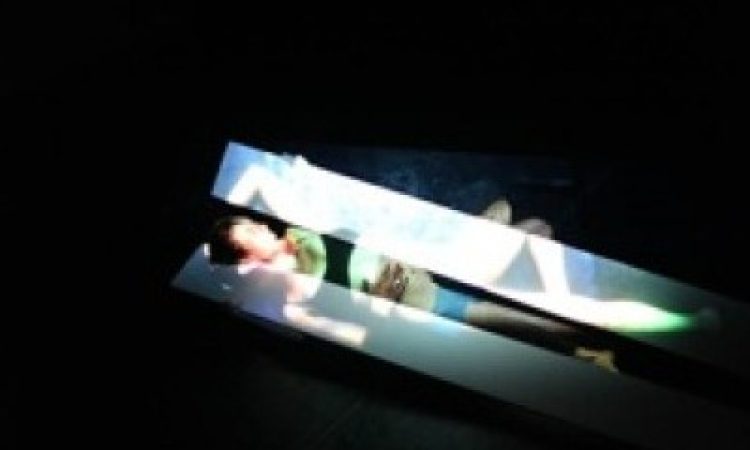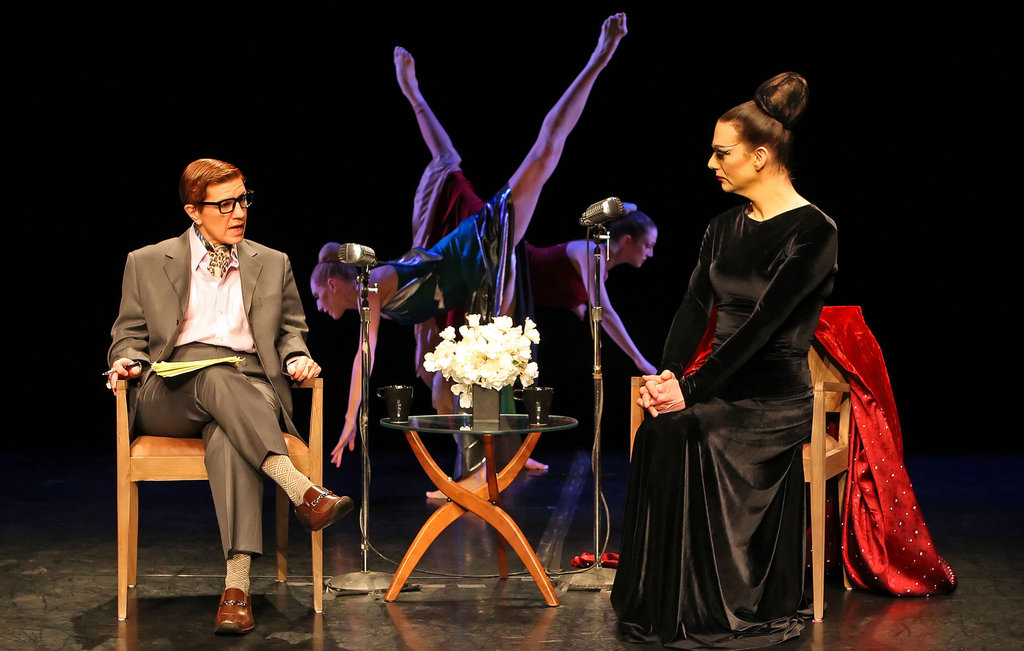I sat down with the five dancers of Group Motion’s most recent commission, THEN, by choreographer Susan Rethorst. Straight out of technical rehearsal, one performer picked up where another left off to paint a portrait of their experience working with Rethorst in their summer workshop and again over the past ten weeks in rehearsal. What follows is what spilled out into my living room:
Lindsay Browning: She [Rethorst] makes decisions by stepping in, by “being” each one of us, which is different than anyone I’ve ever worked with.
Lesya Popil: All the material has to pass through her body before it becomes set. She wants to feel it, to believe it to be what she wants.
Greg Holt: Her response is incredibly holistic—you can’t just change the orientation; you can’t shift it without it becoming a completely different thing. There is no expedient tool in construction; all new material has to be made rather than just “fitting it in” and slamming things next to one another. The whole situation—the spacing, the people, the timing—is all considered.
LB: I think she works really hard as a choreographer.
Ellie Goudie-Averill: It is my job to be present. The more we did it [the piece, in rehearsal], the more I enjoyed it. I adjusted to the pacing and timing, which was hard at first, but now I am excited about the piece.
LP: The workshop in the summer was a chance for everyone to get to know one another, throwing things out, assignments etc. But she said that when she comes back she’s going to really be the director, and that has been absolutely true.
GH: I know the pressure of being in the room with dancers and not wanting them to feel bored, having choreographed something.
LB: She’s got a great way of acknowledging that and being frank about what is happening in the room but not letting that get in the way of her creative process.
David Konyk: I feel like I need to see it, when I’m choreographing, and so I understood her desire to just “see it,” including the whole part that came before that particular section. Like mix tapes—you have to get the in and out parts just right, along with the whole. Manfred [Fischbeck, Artistic Director of Group Motion] likes the rawness, the crispness, and doesn’t want to overdo it. Susan is meticulous.
LP: The way she’s having me perform and move, there is something of my essence in there—she has so much empathy it is uncanny. It feels very familiar and very old—like from my childhood. At first it was like, “oh, you’re seeing this part of me that is so embarrassing,” but it is comfortable now even if a little exposed.
LB: I feel like she sees people, like she is someone who is interested in me as a person, who would look at me closely. She came in and started to SEE us, she knows us well (but isn’t prying). The studio is where the work happens, and she paid a lot of attention.
EGA: She’s using what is there, and that is the piece. I’ve been going through a rough period, but in this process I am expected to come to the room and just be myself as a human being.
GH: There is a high level of empathy but also a distance or objectivity—the piece isn’t that personal. One thing I admire is that she’s willing to be risky—she’s willing to put stuff in that could be seen to undermine the piece (I’m thinking about a musical choice here) because this is what came out through her process, not what she was predisposed to or where she thought of going.
LP: Now there are lights and costumes, but we’re still showing what we made in the same way as in the studio.
DK: She said, “Now you’ve done it so much, that you look like you’re bored…AND KEEP IT.” We have to try not to get amped up under the lights but rather keep the muscle memory and do it so much that it becomes habit rather than affected in the performance weekend. Instead it stays real, and the emotional layer is there and authentic from the start, rather than getting applied in the last week of rehearsals.
LB: She practices what she preaches, what she writes about, so clearly. The work feels true based on her philosophy of choreography. That’s an awesome thing that we’re experiencing, and that is inspiring. I’ve never worked with someone who has made choreography in the way she does.
EGA: I didn’t have to bring my personal experience, my personal process, which you’re asked to do so much in other rehearsals. You’re sharing the essence of yourself, for sure, but not in a personal narrative way.
LB: There is a difference when people are asking me to give them parts of myself. She doesn’t wait for you to give all the time, but she takes what she sees as a sharp observer. I’m surprised at how it feels like a part of me.
LP: It’s all specific to who we are.
DK: There are other things that she doesn’t give so much attention to, and I haven’t figured out what that dividing line is. I feel a little on edge sometimes. I’m not always sure if I’m doing a good job; I don’t know what those criteria are. We revisited some things in tech that we had lost since we made it last summer. She’s more than willing to make sure that we all feel good about it and facilitate comfort, but I don’t know if moments that are important to me are as important to her. When you know someone a long time, you know that they’ll tell you if it isn’t right … but she’s leaving that judgment out of it, and we’re new to her.
EGA: Sometimes I feel like I’m accidentally taking liberties, [doing] things that I just decided to do and I love, but she never told me to do.
DK: She’s seeing the whole. We’re concerned with our parts.
LP: I feel like the piece is just like the way she works. Sometimes we have to cancel, sometimes things are frustrating, sometimes shit happens—and it is all part of the process and all material to be mined. If you didn’t do the whole workshop last summer, and go through this long process, you’ll never understand the time that she needs. It isn’t that she’s not thinking about it, and it isn’t that she’s not making a decision; she’s always considering. It would have been great to have the designers the whole time, or more time in the performance space, because it is all so new now.
LB: If I pan out, I wonder if I can see something about how we behave differently in Group Motion’s process—there is a lot of playing in the Group Motion process that is absent here. That Susan makes art meticulously is very true, and it shows in this piece in a lot of ways.
LP: I don’t believe she’s trying to be mysterious about anything at all, but I do experience her being highly intuitive and empathic. I feel like there is a fine line between what is real and what is fantasy in this work. Both might be real and fantastic.
GH: We definitely don’t want to be precious.
All (Concurring): That’s a good way to put it.
THEN: Philadelphia Dance Projects presents Group Motion. Arts Bank, January 16-19.






